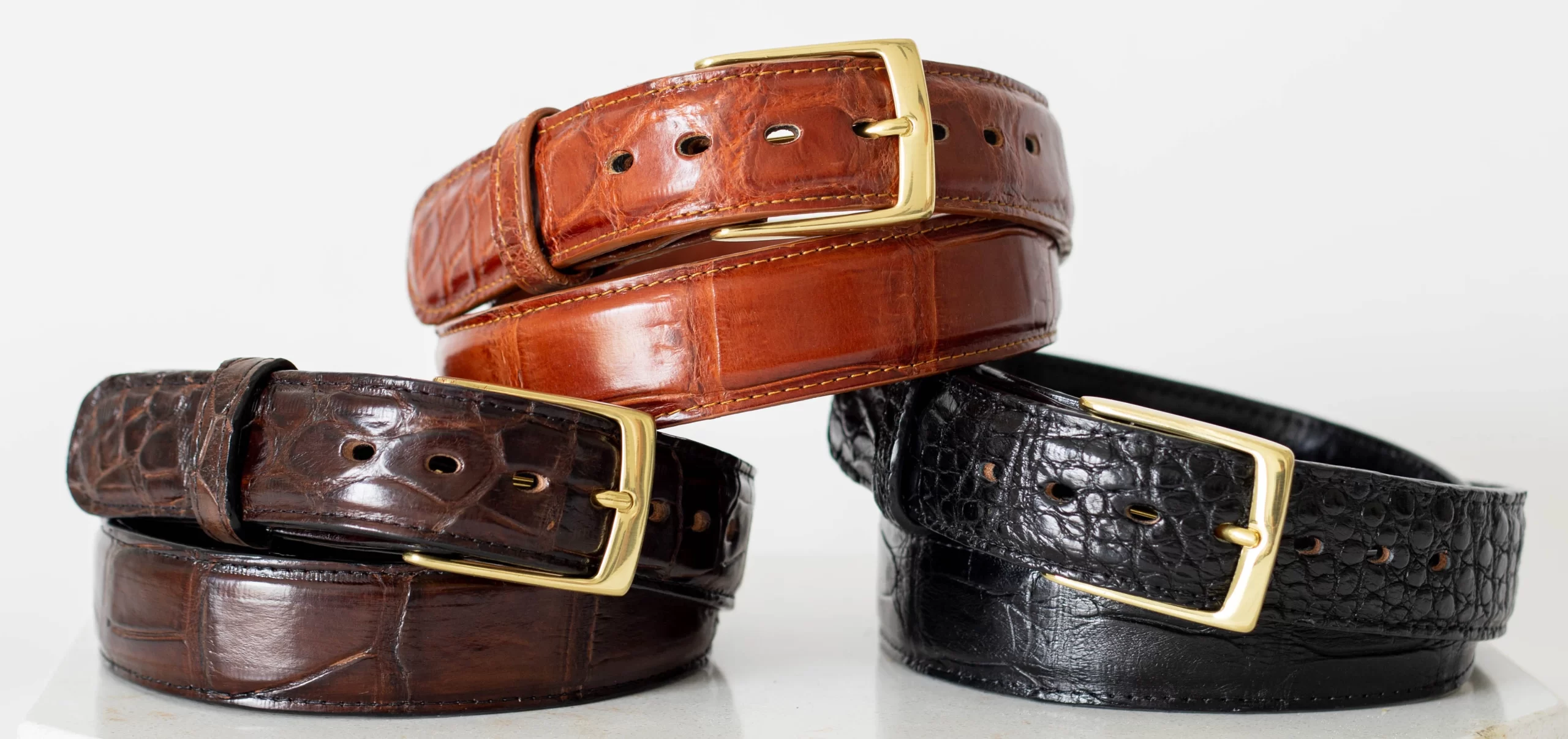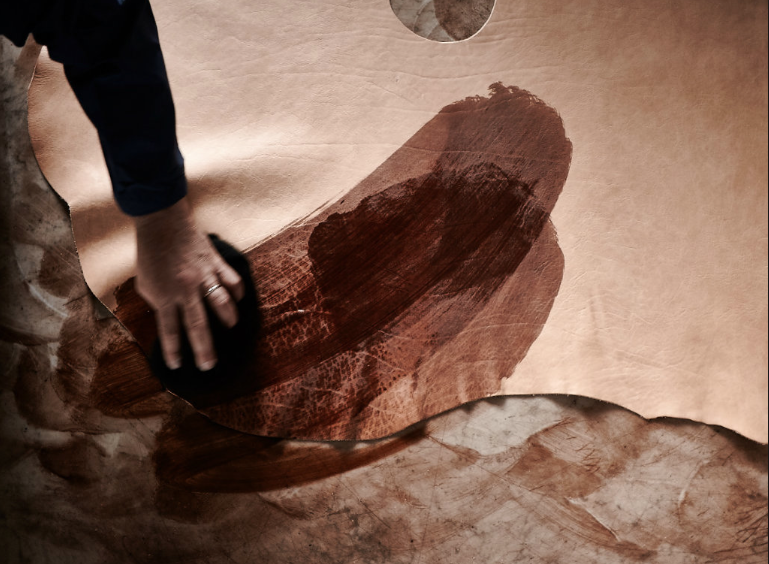
Complete Guide to Alligator Belts
Complete Guide to Alligator Belts Introduction When it comes to sophisticated style and unmatched craftsmanship, nothing compares to a genuine

Leather, a sought-after material for centuries, offers durability, elegance, and versatility. It is crucial to understand the unique properties and uses of each type of leather when selecting leather goods. In this guide, we’ll explore the various grades of leather, such as top-grain and bonded leather, and provide a comprehensive understanding of their characteristics and applications in the world of leather products.
Top-grain leather includes the outer layer of the hide, known as the grain, which features finer, more densely packed fibers, resulting in strength and durability. Depending on thickness, it may also contain some of the more fibrous under layer, known as the corium. Top-grain leather is perfect for outdoors and heavy-duty purposes, such as saddles, tools, and belts.
Full-grain leather contains the entire grain layer, without any removal of the surface. Rather than wearing out, it develops a patina during its useful lifetime. It is usually considered the highest quality leather. Furniture and footwear are often made from full-grain leather. Full-grain leather is typically finished with a soluble aniline dye. We use full-grain leather for all our products, ensuring the highest quality without cutting corners.
Corrected grain leather has the surface subjected to finishing treatments to create a more uniform appearance. This usually involves buffing or sanding away flaws in the grain, then dyeing and embossing the surface.
Nubuck is top-grain leather that has been sanded or buffed on the grain side to give a slight nap of short protein fibers, producing a velvet-like surface.
Split leather is created from the corium left once the top-grain has been separated from the hide, known as the drop split. In thicker hides, the drop split can be further split into a middle split and a flesh split.
Suede is made from the underside of a split to create a soft, napped finish. It is often made from younger or smaller animals, as the skins of adults often result in a coarse, shaggy nap.
Bicast leather is split leather that has a polyurethane or vinyl layer applied to the surface and embossed to give it the appearance of a grain. It is slightly stiffer than top-grain leather but has a more consistent texture.
Patent leather is leather that has been given a high-gloss finish by the addition of a coating. Dating to the late 1700s, it became widely popular after inventor Seth Boyden developed the first mass-production process, using a linseed oil-based lacquer, in Newark, New Jersey, in 1818. Modern versions are usually a form of bicast leather.
Bonded leather, also called reconstituted leather, is a material that uses leather scraps that are shredded and bonded together with polyurethane or latex onto a fiber mesh. The amount of leather fibers in the mix varies from 10% to 90%, affecting the properties of the product.
Now equipped with a deeper understanding of the different grades of leather

Complete Guide to Alligator Belts Introduction When it comes to sophisticated style and unmatched craftsmanship, nothing compares to a genuine
An alligator skin wallet is more than just an accessory—it is a timeless investment that exudes sophistication and luxury. But
A genuine alligator belt is more than just an accessory—it’s a statement of style, sophistication, and quality. Whether you own
Based in Melbourne Fl. Taza Leather makes a collection of leather goods and accessories.